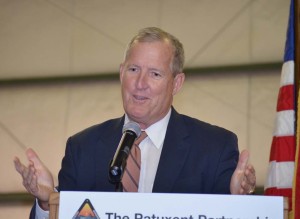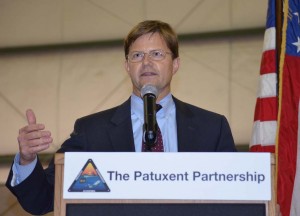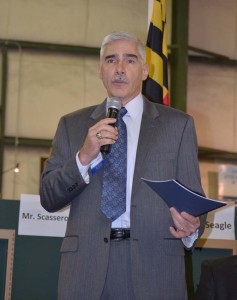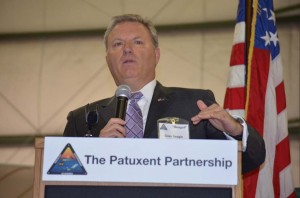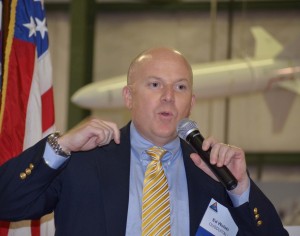Diplomacy Is Key to Getting Drones in Domestic Airspace
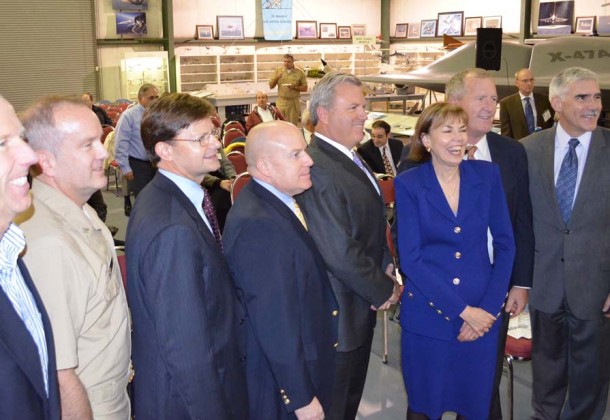
Posted for The Patuxent Partnership
Pax II
By Jay Friess
When it comes to dealing with the Federal Aviation Administration, you can catch more unmanned flies with honey than you can with vinegar, according to a panel of experts who gathered at the Patuxent River Naval Air Museum in Lexington Park, Maryland Tuesday night.
The panel was assembled by The Patuxent Partnership and the Association of Naval Aviation to discuss the integration of unmanned aircraft into domestic airspace, which is the regulatory domain of the FAA. The FAA is responsible for regulating and ensuring the safety of civilian air traffic.
Rear Adm. Tim Heely (ret.), moderator for the event, said that unmanned aviation is poised to dramatically change how the Navy does business.
“The thing that’s going to open this up is letting these [aircraft] into domestic airspace,” Heely said. “I think it is going to be less than five years.”
However, RADM Heely warned that it will take a concerted effort from the military, not the private sector, to create this outcome. “It’s going to have to be user-pulled to make this happen.”
The military currently flies its drones in restricted airspace or under memorandums of agreement and Certificates of Authorization (COA) from the FAA. However, military authorities would like the ability to “file and fly,” simply filing a flight plan with the FAA and sending their drones across the country like any other ferrying military aircraft.
“As we transit to and from deployments, we have to go through the national airspace,” said Michael R. Erk of the Naval Air Systems Command’s Umanned and Strike Weapons Program Office. “How do we get unmanned systems to do it?”
The answer lies in a behavior called “sense and avoid,” a reference to a human pilot’s ability to see and avoid other aircraft. Currently, unmanned aircraft rely on ground-based radars to see other aircraft and provide them with the information needed to avoid them. However, on-board sense-and-avoid technology is untested in civilian airspace.
Currently, the FAA is in the process of selecting several sites around the nation that will be used to test the behavior of various sense-and-avoid schemes in civilian airspace. Matt Scassero, Executive Director of the Mid-Atlantic Unmanned Aerial Systems Coalition, has been given a state grant to work toward bringing one of these regions to Southern Maryland.
The technology to allow unmanned aircraft to fly in civilian airspace already exists, Mr. Scassero said. “The only thing we have to do is figure out how to do it effectively and efficiently.”
Dave Seagle, team leader for the Broad Area Marine Surveillance Demonstrator program, said his team has made strides in working with the FAA on how to do that. Seagle’s relationship with the FAA didn’t start all that well.
“The Air Force came in like a bulldozer,” Mr. Seagle said, noting that the service unilaterally told the FAA how it would fly its drones, without negotiating terms. “We had a lot of fences to mend.”
Mr. Seagle said his team made a lot of effort to demonstrate to the FAA that “we’re not a bunch of cowboys at our first rodeo.” The team worked slowly with the FAA building the agency’s confidence in their capabilities and expanding the reach of its COA.
Tony Gagliardo, an FAA official who attended the discussion, commended the BAMS team during the question and answer session, saying, “It’s groups like this and stories like this that will move this [issue] forward.” Mr. Gagliardo said he trains air traffic controllers for the FAA and added, “Let me tell you how much they don’t know about [unmanned aerial systems].”
“We can be our own worst enemy when it comes to airspace integration,” conceded Ed Wolski , Principal Assistant to Director for Unmanned Warfare at the office of the Undersecretary of Defense for Acquisition, Technology & Logistics. He said unilateral unmanned flight rule-making by the military has caused resentment with some FAA officials. “Every time we go do that, that’s got a half-life of a decade.”
